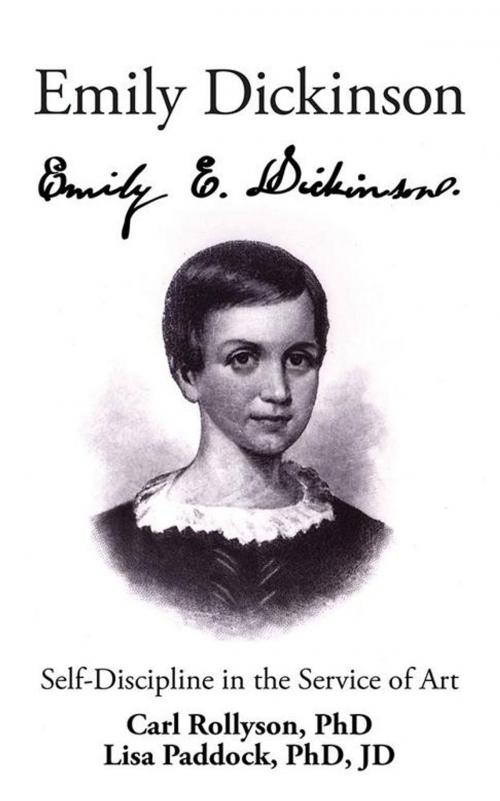| Author: | Carl Rollyson, Lisa Paddock | ISBN: | 9781491750179 |
| Publisher: | iUniverse | Publication: | January 20, 2009 |
| Imprint: | iUniverse | Language: | English |
| Author: | Carl Rollyson, Lisa Paddock |
| ISBN: | 9781491750179 |
| Publisher: | iUniverse |
| Publication: | January 20, 2009 |
| Imprint: | iUniverse |
| Language: | English |
Emily Dickinson exemplified the virtue of self-discipline. She wrote poetry largely for her own pleasure and to exercise and increase her creative talents. Very few of her poems were published during her own lifetime, yet we know that she wrote consistently--perhaps every day--over several decades. Poetry was her way of knowing herself and understanding the world. She could control and express her ideas and emotions through poetry, perhaps the most demanding form of writing.
What does it mean to be a disciplined poet? It means writing and rewriting poems until they seem to be as perfect as possible. Dickinson left behind many drafts of her poems--sometimes including alternate wordings, as if to acknowledge that her writing was still seeking perfection.
Dickinsons discipline was self-imposed. She met no publishing deadlines. She did not write for a patron who sponsored her creative efforts. She did not expect the world to acknowledge her poetry as soon as it was written. Yet now she is considered one of the greatest poets ever to have written in the English language. She valued the labor and the results of a job well done. Emily Dickinson is a model not only for writers, but for anyone who wishes calmly and determinedly to pursue a goal, even without the prospect of an immediate reward.
Emily Dickinson exemplified the virtue of self-discipline. She wrote poetry largely for her own pleasure and to exercise and increase her creative talents. Very few of her poems were published during her own lifetime, yet we know that she wrote consistently--perhaps every day--over several decades. Poetry was her way of knowing herself and understanding the world. She could control and express her ideas and emotions through poetry, perhaps the most demanding form of writing.
What does it mean to be a disciplined poet? It means writing and rewriting poems until they seem to be as perfect as possible. Dickinson left behind many drafts of her poems--sometimes including alternate wordings, as if to acknowledge that her writing was still seeking perfection.
Dickinsons discipline was self-imposed. She met no publishing deadlines. She did not write for a patron who sponsored her creative efforts. She did not expect the world to acknowledge her poetry as soon as it was written. Yet now she is considered one of the greatest poets ever to have written in the English language. She valued the labor and the results of a job well done. Emily Dickinson is a model not only for writers, but for anyone who wishes calmly and determinedly to pursue a goal, even without the prospect of an immediate reward.















